Create successful ePaper yourself
Turn your PDF publications into a flip-book with our unique Google optimized e-Paper software.
156<br />
These problems happen more <strong>of</strong>ten.<br />
<strong>Health</strong> <strong>effects</strong> <strong>of</strong> <strong>chemicals</strong><br />
The chart on the following pages shows the known health <strong>effects</strong> <strong>of</strong> some specific<br />
<strong>chemicals</strong> used in the kinds <strong>of</strong> factories described in this book. Exposure to these<br />
<strong>chemicals</strong> increases your risk <strong>of</strong> getting the health problems shown in the chart.<br />
You can be exposed to a chemical by:<br />
•<br />
•<br />
•<br />
breathing in chemical vapor in the air, or breathing in dust or smoke that<br />
contains <strong>chemicals</strong>.<br />
absorbing chemical dust, powder, grease, or liquid through your skin or eyes.<br />
putting food, drinks, or cigarettes in your mouth that have <strong>chemicals</strong> on them<br />
or in them, or by accidentally swallowing a liquid chemical.<br />
For more information about how <strong>chemicals</strong> get into the body, health<br />
problems caused by <strong>chemicals</strong>, and how to prevent exposure to<br />
dangerous <strong>chemicals</strong>, see ‘Chemicals’ on pages xx to xx.<br />
What the symbols mean<br />
harms the skin<br />
These problems happen less <strong>of</strong>ten, but they are more serious.<br />
harm inside<br />
the body<br />
harms the eyes,<br />
nose, or throat<br />
problems having<br />
healthy children<br />
Some health <strong>effects</strong> are not known<br />
feeling sick,<br />
dizzy, or drunk<br />
causes cancer<br />
Some <strong>chemicals</strong> may harm health in ways that are not shown in the chart.<br />
The ? in the chart means there is not enough information about the long-term<br />
<strong>effects</strong> <strong>of</strong> a chemical to say how harmful it is. For more information about this<br />
problem, see ‘Why are there poisonous <strong>chemicals</strong> in factories?’ on page xx.
Chemical mixtures may be more dangerous<br />
Scientists study each chemical alone to<br />
see how it can harm a person’s health.<br />
But many chemical products —such as<br />
cleaners, dyes, paints, and glues— are a<br />
mixture <strong>of</strong> several <strong>chemicals</strong>. For example,<br />
paint contains solvents, pigments, and<br />
other materials. Solvents usually cause<br />
health problems that are different from<br />
the problems caused by pigments.<br />
There are very few studies to find out if<br />
chemical mixtures are more dangerous or<br />
have different harmful <strong>effects</strong> than each<br />
chemical by itself.<br />
A chemical can have more than one name<br />
<strong>Health</strong> <strong>effects</strong> <strong>of</strong> <strong>chemicals</strong><br />
We list each chemical in the chart by one name. You may know the same chemical<br />
by a different name. Sometimes the names <strong>of</strong> <strong>chemicals</strong> look very similar. The<br />
difference may be only a few letters or a number. Because <strong>of</strong> this, each chemical<br />
also has a unique number called a CAS number. The chart shows the CAS number<br />
<strong>of</strong> each chemical along with the other names <strong>of</strong> that chemical.<br />
If the chemical name you want to look up is not in the chart, use the list <strong>of</strong> ‘Other<br />
chemical names’ on page xx to see if it has a different name in the chart. For<br />
example, the chemical “2-ethoxy ethanol” is sometimes called “Cellosolve®”, and<br />
sometimes called “ethylene glycol monoethyl ether.”<br />
We have listed this chemical as “2-ethoxy ethanol” in chart. If you look for<br />
“Cellosolve®” in the list <strong>of</strong> ‘Other chemical names,’ you will find this entry:<br />
Cellosolve ® . . . . . . . . . . . . . . . . . . . . . . . . . . . . . . . . . . . . . . . . . . . . . . . . . . . . . see 2-ethoxy ethanol<br />
If you look for “ethylene glycol monoethyl ether” in the list <strong>of</strong> ‘Other chemical<br />
names,’ you will find this entry:<br />
ethylene glycol monoethyl ether . . . . . . . . . . . . . . . . . . . . . . . . . . . . . . . . . . . see 2-ethoxy ethanol<br />
For more information about the health <strong>effects</strong> <strong>of</strong> <strong>chemicals</strong>, see xx in ‘Resources,’<br />
on page xx.<br />
157
158<br />
<strong>Health</strong> <strong>effects</strong> <strong>of</strong> <strong>chemicals</strong><br />
DRAFT — FEBRUARY 2006<br />
How to find a specific chemical using the chart<br />
To find information about a chemical, first look for the name <strong>of</strong> the chemical in the<br />
chart. If the name begins with a number, use the first letter <strong>of</strong> the name to find the<br />
chemical. For example, you will find “2-ethoxy ethanol” with the chemical names that<br />
begin with the letter ‘E’. The chemical names are listed in the order <strong>of</strong> the alphabet:<br />
A B C D E F G H I J K L M N O P Q R S T U V W X Y Z<br />
acetone CAS# 67-64-1<br />
Other names: 2-propanone, dimethyl ketone<br />
Uses: solvent, nail polish remover<br />
Red, itchy, dry,<br />
or cracked skin.<br />
Harms brain.<br />
Watery, red eyes.<br />
Itchy, dry nose<br />
and throat.<br />
Harms baby during<br />
pregnancy.<br />
Headache , nausea,<br />
confusion, feel weak<br />
or dizzy.<br />
None.<br />
Catches fire easily. Not as poisonous as most other solvents. Small amounts are safe to use.<br />
Smells very bad. See ‘Solvents’ on page xx.<br />
acrylamide CAS# 79-06-1<br />
Other names: acrylamide monomer<br />
Uses: a white powder or liquid used in glues, dye, textiles, permanent press fabrics<br />
Red, itchy, dry, or<br />
cracked skin. Skin<br />
on palms peels.<br />
Watery, red eyes.<br />
Itchy, dry nose<br />
and throat.<br />
None.<br />
Serious harm to<br />
nerves in hands,<br />
arms, and legs. ? Cancer.<br />
Acrylamide monomer is very poisonous and easily absorbed through skin.
<strong>Health</strong> <strong>effects</strong> <strong>of</strong> <strong>chemicals</strong><br />
asbestos CAS# 1332-21-4<br />
Other names: none<br />
Uses: firepro<strong>of</strong> fabrics, brake lining, gaskets, heating and electrical insulation,<br />
pipe insulation, reinforcing in rubber, plastic, and cement<br />
None. None. None.<br />
Hardening<br />
<strong>of</strong> the lungs<br />
(asbestosis).<br />
None.<br />
Very poisonous dust. See ‘Asbestos’ on page xx.<br />
Lung cancer, cancer <strong>of</strong><br />
the lining around the<br />
lungs (mesothelioma),<br />
and other cancers.<br />
benzene CAS# 71-43-2<br />
Other names: benzol, phenyl hydride<br />
Uses: solvent<br />
Red, itchy, dry,<br />
or cracked skin.<br />
Harms brain. Harms<br />
blood cells, causes<br />
weak blood (anemia).<br />
Watery, red eyes.<br />
Itchy, dry nose<br />
and throat.<br />
Harms baby<br />
during pregnancy.<br />
Headache , nausea,<br />
confusion, feel weak<br />
or dizzy.<br />
Cancer <strong>of</strong> the blood<br />
(leukemia) and<br />
other cancers.<br />
Catches fire easily. More poisonous than most other solvents. Easily absorbed through skin.<br />
See ‘Solvents’ on page xx.<br />
beryllium CAS# 7440-41-7<br />
Other names: Be, beryllium fluoride, beryllium chloride, beryllium sulfate,<br />
beryllium oxide, beryllium phosphate, glucinium<br />
Uses: in some metal alloys, especially for aerospace and high-tech parts<br />
Red, itchy rash.<br />
Watery, red eyes.<br />
Itchy, dry nose<br />
and throat.<br />
Headache , nausea,<br />
confusion, feel weak<br />
or dizzy.<br />
Breathing problems,<br />
fatigue, fever, weight<br />
loss. Harms brain,<br />
lungs, liver, kidneys,<br />
and bones. ? Lung cancer.<br />
Very poisonous dust and fume. See also ‘Lead and other toxic metals’ on page xx.<br />
159
160<br />
<strong>Health</strong> <strong>effects</strong> <strong>of</strong> <strong>chemicals</strong><br />
DRAFT — FEBRUARY 2006<br />
boric acid CAS# 10043-35-3<br />
Other names: none<br />
Uses: flame retardant treatment for cellulose, mattresses, and textiles<br />
glassmaking<br />
Red, itchy, dry,<br />
or cracked skin.<br />
None.<br />
Easily absorbed through skin.<br />
Watery, red eyes.<br />
Itchy, dry nose<br />
and throat.<br />
None.<br />
Makes men unable<br />
to have children. ?<br />
bromopropane CAS# 75-26-3 and 106-94-5<br />
Other names: 1-bromopropane, 2-bromopropane,<br />
n-propyl bromide, isopropyl bromide<br />
Uses: solvent<br />
Red, itchy, dry,<br />
or cracked skin.<br />
Anemia. Harms<br />
liver. Harms nerves<br />
controlling walking,<br />
bowel, bladder, and<br />
other functions.<br />
Watery, red eyes.<br />
Itchy, dry nose<br />
and throat.<br />
Makes men and women<br />
unable to have children.<br />
Affects women’s monthly<br />
bleeding. Harms baby<br />
during pregnancy.<br />
None.<br />
Cancer.<br />
More poisonous than most other solvents. Easily absorbed through skin. See ‘Solvents’ on page xx.<br />
cadmium CAS# 7440-43-9<br />
Other names: none<br />
Uses: metal and compounds from metal alloys, enamels, fungicide,<br />
batteries, electronics, solder, pigment<br />
None. Watery, red eyes. None.<br />
Harms kidneys, bones,<br />
lungs, nerves, and<br />
ability to smell.<br />
Harms ability<br />
<strong>of</strong> men to have<br />
children.<br />
Lung, prostate, and<br />
other cancers.<br />
Very dangerous to inhale in any form. Causes fever with breathing problems (metal fume fever). See<br />
‘Lead and other toxic metals’ on page xx.
<strong>Health</strong> <strong>effects</strong> <strong>of</strong> <strong>chemicals</strong><br />
carbon monoxide CAS# 630-08-0<br />
Other names: CO<br />
Uses: a gas found in motor exhaust, especially from gasoline, diesel, kerosene,<br />
and CNG motors, and in smoke and fumes from fires<br />
None. None.<br />
Harms blood.<br />
Harms baby<br />
during pregnancy.<br />
Headache, nausea,<br />
feeling tired,<br />
unconsciousness, death.<br />
None.<br />
CO has no smell. A common killer from running motors or burning fires indoors. See ‘Motor exhaust’ on<br />
page xx.<br />
carbon tetrachloride CAS# 56-23-5<br />
Other names: carbon tet, carbon chloride, tetrachloromethane, Freon ® 10, Halon ® 104<br />
Uses: solvent, stain spotter<br />
Red, itchy, dry,<br />
or cracked skin.<br />
Harms brain, liver,<br />
kidneys, and heart.<br />
Watery, red eyes.<br />
Itchy, dry nose<br />
and throat.<br />
Harms baby<br />
during pregnancy.<br />
Headache , nausea,<br />
confusion, feel weak<br />
or dizzy.<br />
Liver cancer.<br />
More poisonous than most other solvents. Easily absorbed through skin. See ‘Solvents’ on page xx.<br />
chlorine CAS# 7782-50-5<br />
Other names: chlorine gas<br />
Uses: disinfection treatment <strong>of</strong> water and sewage<br />
Burns skin.<br />
Causes death.<br />
Burns lungs.<br />
Asthma.<br />
Very dangerous to breathe in.<br />
Burns eyes, nose,<br />
and throat.<br />
None.<br />
None. None.<br />
161
162<br />
<strong>Health</strong> <strong>effects</strong> <strong>of</strong> <strong>chemicals</strong><br />
DRAFT — FEBRUARY 2006<br />
chlor<strong>of</strong>orm CAS# 67-66-3<br />
Other names: methane trichloride, trichloromethane<br />
Uses: solvent<br />
Red, itchy, dry,<br />
or cracked skin.<br />
Harms brain, liver,<br />
kidneys, and heart.<br />
Can stop the heart.<br />
Watery, red eyes.<br />
Itchy, dry nose<br />
and throat.<br />
Harms baby<br />
during pregnancy.<br />
Headache , nausea,<br />
confusion, feel weak<br />
or dizzy.<br />
Cancer.<br />
More poisonous than most other solvents. Easily absorbed through skin. See ‘Solvents’ on page xx.<br />
chromium CAS# 7440-47-3<br />
Other names: Cr, chrome, chromic acid, chromic trioxide, zinc chromate,<br />
potassium dichromate, and other chromate and dichromate compounds<br />
Uses: paints; stainless steel welding and cutting; chromate welding and cutting; electroplating baths<br />
for chrome plating onto metal and plastic; in stainless steel, pigments, dyes and glazes, wood<br />
preservatives, leather tanning, ferrochrome metal casting, anticorrosion coatings<br />
Red, itchy allergic<br />
rash. Skin wounds<br />
that heal slowly.<br />
Burns to eyes,<br />
nose, and throat<br />
from chromic acid.<br />
Wound inside nose.<br />
None.<br />
Harms lungs causing<br />
wheezing, chest pain.<br />
Chromic acid can stain<br />
and eat away teeth. ? Lung cancer.<br />
“Hard chrome” plating is more poisonous than “bright chrome” plating. See ‘Lead and other toxic<br />
metals’ on page xx.<br />
cobalt CAS# 7440-48-4<br />
Other names: Co, carbides, cobalt sulfate<br />
Uses: metal and metal alloys such as steel and “hard metal”<br />
pigments, paint, coatings<br />
Red, itchy allergic<br />
rash on neck, ankles,<br />
and elbow crease.<br />
Watery, red eyes.<br />
Itchy, dry nose<br />
and throat.<br />
None.<br />
Wheezing, cough,<br />
and feeling short<br />
<strong>of</strong> breath. Harms<br />
lungs and heart. ? Cancer.<br />
See ‘Lead and other toxic metals’ on page xx.
<strong>Health</strong> <strong>effects</strong> <strong>of</strong> <strong>chemicals</strong><br />
colophony CAS# 8050-09-7<br />
Other names: colophany, rosin, resin<br />
Uses: cored solder and soldering flux, heat and pressure sensitive glue,<br />
paint, varnish, ink, corrosion inhibitors, grease, waterpro<strong>of</strong>ing agents<br />
Allergic rash.<br />
Watery, red eyes.<br />
Itchy, dry nose<br />
and throat.<br />
None.<br />
Asthma. ? ?<br />
People who have allergy to colophony may react to cosmetics and creams which contain colophony.<br />
See ‘Welding and soldering fumes’ on page xx.<br />
cyanide CAS# 74-90-8<br />
Other names: CN, hydrogen cyanide, hydrocyanic acid, prussic acid, potassium cyanide<br />
Uses: metal treatment, fumigation<br />
potassium cyanide used in metal plating<br />
Red, itchy, dry, or<br />
cracked skin. Burns.<br />
Wound inside nose. None.<br />
Unconsciousness after<br />
weakness, headache,<br />
confusion, nausea. ? ?<br />
A fast-acting poison. Antidotes to poisoning exist. Easily absorbed through skin. See ‘Electroplating<br />
baths’ on page xx.<br />
DMF CAS# 68-12-2<br />
Other names: n,n-dimethylformamide<br />
Uses: solvent, spinning acrylic fibers, adhesives, fabric dyes and pigments<br />
Red, itchy, dry,<br />
or cracked skin.<br />
Watery, red eyes.<br />
Itchy, dry nose<br />
and throat.<br />
None.<br />
Harms liver. ? Testicular cancer.<br />
More poisonous than most other solvents. Easily absorbed through skin. See ‘Solvents’ on page xx.<br />
163
164<br />
<strong>Health</strong> <strong>effects</strong> <strong>of</strong> <strong>chemicals</strong><br />
DRAFT — FEBRUARY 2006<br />
epoxy CAS# none<br />
Other names: epoxy resin, glycidyl ether, epoxide, amine curing agents<br />
Uses: a 2-part liquid that turns solid<br />
commonly used as a surface coating, glue, binding agent, forms for metal casting, and rigid foam<br />
Red, itchy, dry,<br />
or cracked skin.<br />
Allergic rash. Burns.<br />
Watery, red eyes.<br />
Itchy, dry nose<br />
and throat.<br />
None.<br />
Asthma,<br />
difficulty breathing. ? ?<br />
2-ethoxyethanol CAS# 110-80-5<br />
Other names: Cellosolve ® , ethylene glycol monoethyl ether, EGEE,<br />
or any <strong>of</strong> these plus the word “acetate”<br />
Uses: solvent<br />
Red, itchy, dry,<br />
or cracked skin.<br />
Harms brain, blood<br />
(bone marrow),<br />
and kidneys.<br />
Watery, red eyes.<br />
Itchy, dry nose<br />
and throat.<br />
Very harmful to baby<br />
during pregnancy. Harms<br />
ability <strong>of</strong> both men and<br />
women to have children.<br />
Headache, nausea,<br />
confusion, feel weak<br />
or dizzy.<br />
More poisonous than most other solvents. Easily absorbed through skin. See ‘Solvents’ on page xx.<br />
ethyl acetate CAS# 141-78-6<br />
Other names: none<br />
Uses: solvent<br />
Red, itchy, dry,<br />
or cracked skin.<br />
Harms brain.<br />
Watery, red eyes.<br />
Itchy, dry nose<br />
and throat.<br />
?<br />
Harm to baby<br />
during pregnancy. ?<br />
Headache, nausea,<br />
confusion, feel weak<br />
or dizzy.<br />
Catches fire easily. Less poisonous than many other solvents. See ‘Solvents’ on page xx.
<strong>Health</strong> <strong>effects</strong> <strong>of</strong> <strong>chemicals</strong><br />
ethyl alcohol CAS# 64-17-5<br />
Other names: alcohol, grain alcohol, ethanol, denatured alcohol, SD alcohol<br />
Uses: solvent<br />
Red, itchy, dry,<br />
or cracked skin.<br />
Watery, red eyes.<br />
Itchy, dry nose<br />
and throat.<br />
Harms brain. ? None.<br />
Headache, nausea,<br />
confusion, feel weak<br />
or dizzy.<br />
Catches fire easily. Less poisonous than most other solvents. Industrial ethyl alcohol is usually<br />
contaminated with other <strong>chemicals</strong> that make it more poisonous to drink than alcoholic<br />
beverages. See ‘Solvents’ on page xx.<br />
ethylene glycol CAS# 107-21-1<br />
Other names: ethylene alcohol, glycol, and 1,2-ethanediol<br />
Uses: solvent, antifreeze, polyester manufacture<br />
Red, itchy, dry,<br />
or cracked skin.<br />
Harms brain.<br />
See ‘Solvents’ on page xx.<br />
Watery, red eyes.<br />
Itchy, dry nose<br />
and throat.<br />
Harms baby<br />
during pregnancy. ?<br />
Headache, nausea,<br />
confusion, feel weak<br />
or dizzy.<br />
fiberglass and mineral wools CAS# none<br />
Other names: glass wool, fibrous glass, slag wool, rock wool, ceramic fibers<br />
Uses: insulation, filters, textiles, plastic reinforcement<br />
Itchy, red rash.<br />
Watery, red eyes.<br />
Itchy nose and throat.<br />
None.<br />
Harms lungs. None. Lung cancer.<br />
Less harmful than asbestos. Often used instead <strong>of</strong> asbestos.<br />
165
166<br />
<strong>Health</strong> <strong>effects</strong> <strong>of</strong> <strong>chemicals</strong><br />
DRAFT — FEBRUARY 2006<br />
formaldehyde CAS# 50-00-0<br />
Other names: formalin (liquid), HCHO, formaldehyde gas<br />
Uses: permanent press fabric coating, foam insulation,<br />
epoxy resins, disinfectant, plywood and particle wood products<br />
Red, itchy, dry, or<br />
cracked skin. Burns.<br />
Allergic rash.<br />
Harms lungs.<br />
Asthma. ?<br />
Watery, red eyes.<br />
Itchy, dry nose<br />
and throat.<br />
Headache and<br />
irritability from<br />
high exposure.<br />
Cancer <strong>of</strong> nose,<br />
throat, and<br />
breathing passages.<br />
Extremely strong smell. Allergic skin rash and asthma may occur at exposure so low you cannot smell<br />
it. People who have allergy to formaldehyde may react to cosmetics which contain formaldehyde. See<br />
‘Formaldehyde’ on page xx.<br />
gasoline CAS# 8006-61-9<br />
Other names: petrol, motor fuel, benzene<br />
Uses: fuel, solvent<br />
Red, itchy, dry,<br />
or cracked skin.<br />
Burns.<br />
Stops the heart.<br />
Harms brain<br />
and kidneys.<br />
HCFCs and HFCs CAS# different for each type<br />
Other names: Freon substitutes, “ozone-safe” substitutes,<br />
hydrochlor<strong>of</strong>luorocarbons, hydr<strong>of</strong>luorocarbons<br />
Uses: liquids and gases used as refrigerant, solvent, propellant for aerosol spray,<br />
fire suppression systems, foam blowing agent<br />
Red, itchy, dry,<br />
or cracked skin.<br />
Harm brain,<br />
liver, and heart.<br />
Watery, red eyes.<br />
Itchy, dry nose<br />
and throat.<br />
Leaded gasoline harms<br />
ability <strong>of</strong> both men and<br />
women to have healthy<br />
children, and harms baby<br />
during pregnancy.<br />
Watery, red eyes.<br />
Itchy, dry nose<br />
and throat.<br />
Some types harm baby<br />
during pregnancy. ?<br />
Headache, nausea,<br />
confusion, feel weak<br />
or dizzy.<br />
Cancer.<br />
Catches fire easily. Easily absorbed through skin. Siphoning gasoline by mouth is very<br />
dangerous due to risk <strong>of</strong> swallowing gasoline. See ‘Solvents’ on page xx.<br />
Headache, nausea,<br />
confusion, feel weak<br />
or dizzy.<br />
HCFC-123 harms liver. HCFC-124 and HCFC-125 may harm liver. Most HCFCs and HFCs are new <strong>chemicals</strong><br />
and their health <strong>effects</strong> are unknown. Some are easily absorbed through skin.
<strong>Health</strong> <strong>effects</strong> <strong>of</strong> <strong>chemicals</strong><br />
hexane CAS# 100-54-3<br />
Other names: n-hexane<br />
Uses: solvent, propellant for aerosol spray, glues<br />
Red, itchy, dry,<br />
or cracked skin.<br />
Numb or weak hands<br />
and feet. Harms<br />
nerves in hands,<br />
arms, legs, and feet.<br />
Watery, red eyes.<br />
Itchy, dry nose and<br />
throat. Cough.<br />
Harms baby<br />
during pregnancy. ?<br />
Headache, nausea,<br />
confusion, feel weak<br />
or dizzy.<br />
Catches fire easily. More poisonous than most other solvents. See ‘Solvents’ on page xx.<br />
hydrochloric acid CAS# 7646-01-0<br />
Other names: HCl, muriatic acid, hydrogen chloride<br />
Uses: cleaning<br />
Burns.<br />
Burns lungs.<br />
Wears away teeth.<br />
Burns to eyes,<br />
nose, and throat.<br />
Choking feeling.<br />
None.<br />
None. Lung cancer.<br />
hydr<strong>of</strong>luoric acid CAS# 7664-39-3<br />
Other names: HF<br />
Uses: etching baths, electroplating baths for metal, cleaning<br />
Severe burns.<br />
Severe burns to eyes,<br />
nose, and throat from<br />
liquid splash or vapor.<br />
None.<br />
Burns lungs.<br />
Chronic coughing.<br />
Harms bones. ? ?<br />
Extremely dangerous to touch liquid or inhale mist. Burns are <strong>of</strong>ten painless at first but are still very<br />
serious and will become painful later.<br />
167
168<br />
<strong>Health</strong> <strong>effects</strong> <strong>of</strong> <strong>chemicals</strong><br />
DRAFT — FEBRUARY 2006<br />
hydrogen peroxide CAS# 7722-84-1<br />
Other names: 10% to 90% hydrogen peroxide<br />
Uses: bleach, deodorize, disinfect fabric or other materials<br />
Red, itchy, dry,<br />
or cracked skin.<br />
Burns skin.<br />
Watery, red eyes.<br />
Burns eyes. Itchy,<br />
dry nose and throat.<br />
None.<br />
None. ? ?<br />
Helps other materials burn faster. Burns to eyes and skin from a splash may take hours or days<br />
to become visible.<br />
isopropyl alcohol CAS# 67-63-0<br />
Other names: isopropanol, propyl alcohol, IPA, 2-propanol, dimethylcarbinol<br />
Uses: solvent, soldering flux, disinfectant<br />
Red, itchy, dry,<br />
or cracked skin.<br />
Harms brain.<br />
Harms kidneys<br />
if swallowed.<br />
Watery, red eyes.<br />
Itchy, dry nose<br />
and throat.<br />
Harms baby<br />
during pregnancy.<br />
Headache, nausea,<br />
confusion, feel weak<br />
or dizzy.<br />
Catches fire easily. Not as poisonous as most other solvents. See ‘Solvents’ on page xx.<br />
kerosene CAS# 8008-20-6<br />
Other names: stove oil, kerosine<br />
Uses: fuel, solvent<br />
Red, itchy, dry,<br />
or cracked skin.<br />
Harms brain.<br />
Watery, red eyes.<br />
Itchy, dry nose<br />
and throat.<br />
Harms baby<br />
during pregnancy.<br />
?<br />
Headache, nausea,<br />
confusion, feel weak<br />
or dizzy.<br />
Catches fire easily. “High Flash” kerosene does not catch fire as easily as other kerosene. See<br />
‘Solvents’ on page xx.<br />
?
<strong>Health</strong> <strong>effects</strong> <strong>of</strong> <strong>chemicals</strong><br />
lead CAS# 7439-92-1<br />
Other names: Pb, any solid or liquid chemical with the word “lead” or “Pb” in the name<br />
Uses: in solder, batteries, radiators, gasoline, metal alloys, pigments in plastics, glazes and paint<br />
None. None. None.<br />
Harms brain,<br />
nerves, kidneys,<br />
and blood<br />
(anemia).<br />
Harms ability <strong>of</strong> both<br />
men and women to have<br />
healthy children. Harms<br />
baby during pregnancy.<br />
Cancer.<br />
Very poisonous dust. Lead in liquids is easily absorbed through skin. See ‘Lead’ on page xx.<br />
manganese CAS# 7439-96-5<br />
Other names: Mn, ferromanganese<br />
Uses: metal and steel alloys, welding rods, batteries<br />
None.<br />
Tremors, weakness,<br />
loss <strong>of</strong> balance,<br />
dementia. Harms<br />
brain, lungs, liver,<br />
and kidneys.<br />
Itchy, dry nose<br />
and throat.<br />
Affects ability<br />
<strong>of</strong> men to have<br />
children.<br />
Headache.<br />
Very poisonous fume and dust. See ‘Welding and soldering fumes’ on page xx and ‘Lead and other<br />
toxic metals’ on page xx.<br />
mercury CAS# 7439-97-6<br />
Other names: Hg, quicksilver, any chemical with mercury or Hg in the name<br />
Uses: metal and compounds, electrical parts, mirror coatings<br />
Red, itchy, dry,<br />
or cracked skin.<br />
Tremors. Dementia.<br />
Harms kidneys,<br />
brain, and nerves.<br />
Watery, red eyes.<br />
Itchy, dry nose<br />
and throat.<br />
Harms baby during<br />
pregnancy. Passed to<br />
baby through mothers’<br />
milk if mother works<br />
with mercury. Affects<br />
a woman’s monthly<br />
bleeding. Affects ability<br />
<strong>of</strong> men to have children.<br />
?<br />
None.<br />
Very poisonous. Liquid mercury at room temperature gives <strong>of</strong>f vapors with no smell. See ‘Lead and<br />
other toxic metals’ on page xx.<br />
?<br />
169
170<br />
<strong>Health</strong> <strong>effects</strong> <strong>of</strong> <strong>chemicals</strong><br />
DRAFT — FEBRUARY 2006<br />
metalworking fluids CAS# none<br />
Other names: many types <strong>of</strong> metalworking fluids with different names<br />
Uses: cools and lubricates metals during machining<br />
Red, itchy, dry, or<br />
cracked skin. Pimples.<br />
Allergic rash.<br />
Harms lungs. ?<br />
Watery red eyes.<br />
Itchy nose and throat.<br />
Coughing, sneezing.<br />
None.<br />
Cancer <strong>of</strong> skin, lung,<br />
stomach, intestines.<br />
May contain 2-ethoxyethanol, 2-methoxyethanol, or pentachlorophenol, which harm baby during<br />
pregnancy. See ‘2-ethoxyethanol’ and ‘2-methoxyethanol’ in this chart on page xx. See ‘Metalworking<br />
fluids and machine lubricants’ on page xx.<br />
2-methoxyethanol CAS# 109-86-4<br />
Other names: methyl Cellosolve ® , ethylene glycol monomethyl ether,<br />
EGME, or any <strong>of</strong> these plus the word “acetate”<br />
Uses: solvent<br />
Red, itchy, dry,<br />
or cracked skin.<br />
Harms brain<br />
and blood cells<br />
(bone marrow).<br />
Watery red eyes. Itchy<br />
nose and throat.<br />
Harms baby during<br />
pregnancy. Harms ability<br />
<strong>of</strong> both women and men<br />
to have children.<br />
Headache, nausea,<br />
confusion, feel weak<br />
or dizzy.<br />
More toxic than most other solvents. Easily absorbed through skin. See ‘Solvents’ on page xx.<br />
methyl alcohol CAS# 67-56-1<br />
Other names: methanol, wood alcohol, fuel alcohol<br />
Uses: solvent, lamp fuel<br />
Red, itchy, dry,<br />
or cracked skin.<br />
Harms brain.<br />
Drinking methanol<br />
causes blindness.<br />
Watery red eyes.<br />
Itchy nose and throat.<br />
Harms baby<br />
during pregnancy.<br />
Catches fire easily. See ‘Solvents’ on page xx.<br />
?<br />
Headache, nausea,<br />
confusion, feel weak<br />
or dizzy.<br />
?
<strong>Health</strong> <strong>effects</strong> <strong>of</strong> <strong>chemicals</strong><br />
methylene chloride CAS# 75-09-2<br />
Other names: dichloromethane, methylene dichloride<br />
Uses: solvent, paint remover<br />
Red, itchy, dry,<br />
or cracked skin.<br />
Harms blood<br />
and heart.<br />
May stop heart.<br />
Watery red eyes.<br />
Itchy nose and throat.<br />
Harms baby<br />
during pregnancy.<br />
Headache, nausea,<br />
feeling tired,<br />
unconsciousness, death.<br />
Cancer.<br />
More poisonous than most other solvents. Easily absorbed through skin. See ‘Solvents’ on page xx.<br />
methyl ethyl ketone CAS# 78-93-3<br />
Other names: ethyl methyl ketone, 2-butanone, MEK<br />
Uses: solvent<br />
Red, itchy, dry,<br />
or cracked skin.<br />
Numbness in<br />
fingers, arms, legs.<br />
Harms brain.<br />
Watery red eyes.<br />
Itchy nose and throat.<br />
Catches fire easily. See ‘Solvents’ on page xx.<br />
Harms baby<br />
during pregnancy. ?<br />
Headache, nausea,<br />
confusion, feel weak<br />
or dizzy.<br />
methyl isobutyl ketone CAS# 108-10-1<br />
Other names: hexone, 4-methyl-2-pentanone, isopropylacetone, MIBK<br />
Uses: solvent<br />
Red, itchy, dry,<br />
or cracked skin.<br />
Harms brain<br />
and kidneys.<br />
Watery red eyes.<br />
Itchy nose and throat.<br />
Catches fire easily. See ‘Solvents’ on page xx.<br />
Harms baby<br />
during pregnancy. ?<br />
Headache, nausea,<br />
confusion, feel weak<br />
or dizzy.<br />
171
172<br />
<strong>Health</strong> <strong>effects</strong> <strong>of</strong> <strong>chemicals</strong><br />
DRAFT — FEBRUARY 2006<br />
motor exhaust CAS# none<br />
Other names: exhaust, engine fumes, motor vehicle exhaust, tailpipe emissions<br />
Uses: fumes from burning fuel, including diesel, gasoline, kerosene, propane, and CNG<br />
None.<br />
Harms blood. Diesel<br />
exhaust causes<br />
asthma, bronchitis.<br />
Watery red eyes.<br />
Itchy nose and throat.<br />
Harms baby<br />
during pregnancy.<br />
Headache, nausea,<br />
feeling tired,<br />
unconsciousness, death.<br />
Gasoline motor exhaust<br />
causes cancer.<br />
Diesel exhaust causes<br />
lung cancer.<br />
All motor exhaust contains carbon monoxide. See ‘carbon monoxide’ in this chart on page xx. Exhaust<br />
from motors using leaded gasoline also contains lead. See ‘lead’ in this chart on page xx and ‘Motor<br />
exhaust’ on page xx.<br />
naphtha CAS# 8030-30-6<br />
Other names: petroleum naphtha, petroleum ether, petroleum distillates,<br />
mineral spirits, kerosene, paint thinner, VM&P naptha, white spirits, benzin, ligroin<br />
Uses: solvent<br />
Red, itchy, dry,<br />
or cracked skin.<br />
Harms brain.<br />
Watery red eyes.<br />
Itchy nose and throat.<br />
Coughing.<br />
Harms baby<br />
during pregnancy.<br />
Headache, nausea,<br />
confusion, feel weak<br />
or dizzy.<br />
Some catch fire easily. “High Flash” catch fire less easily. Most naphthas are less poisonous<br />
than most other solvents. “Coal tar” naphtha is more poisonous than other naphthas. See<br />
‘Solvents’ on page xx.<br />
nickel CAS# 7440-02-0<br />
Other names: Ni<br />
Uses: in metal alloys (stainless steel, copper, brass), electroplating baths for coating metal, batteries<br />
Red, itchy, dry,<br />
or cracked skin.<br />
Allergic rash.<br />
Harms lungs.<br />
Asthma.<br />
Stuffy, runny nose.<br />
Harms sense <strong>of</strong> smell.<br />
Wound inside nose.<br />
?<br />
?<br />
None.<br />
Cancer <strong>of</strong> lungs<br />
and nasal passages.<br />
Skin allergy to nickel is common. People who have an allergy to nickel may react to metal tools, coins,<br />
jewelry, pigments, or other things which contain nickel. See ‘Lead and other toxic metals’ on page xx.
<strong>Health</strong> <strong>effects</strong> <strong>of</strong> <strong>chemicals</strong><br />
nitric acid CAS# 7697-37-2<br />
Other names: engravers acid, azotic acid<br />
Uses: engraving, etching steel, urethane coatings, plastic, rubber<br />
Mist causes red, itchy,<br />
dry, or cracked skin.<br />
Burns skin.<br />
Harms lungs. Burns<br />
to lungs may not be<br />
felt until hours after<br />
exposure. Wears<br />
away teeth.<br />
Mist causes red,<br />
watery eyes. Itchy<br />
nose and throat.<br />
Liquid burns eyes.<br />
None.<br />
None.<br />
NMP CAS# 872-50-4<br />
Other names: n-methyl-2-pyrrolidone, m-pyrol<br />
Uses: solvent, waterpro<strong>of</strong> coating for fabric, paint remover<br />
Red, itchy, dry,<br />
or cracked skin.<br />
?<br />
Watery, red,<br />
painful eyes.<br />
Harms baby<br />
during pregnancy.<br />
Easily absorbed through skin. See ‘Solvents’ on page xx.<br />
?<br />
Headache.<br />
phosphoric acid CAS# 7664-38-2<br />
Other names: orthophosphoric acid<br />
Uses: treating metal, electroplating baths for metals, dying cotton, food processing<br />
Burns skin.<br />
None. None.<br />
Not as poisonous as most other acids.<br />
Watery, red eyes. Burns<br />
eyes. Itchy, dry nose<br />
and throat. Coughing.<br />
?<br />
None.<br />
?<br />
173
174<br />
<strong>Health</strong> <strong>effects</strong> <strong>of</strong> <strong>chemicals</strong><br />
DRAFT — FEBRUARY 2006<br />
phthalates CAS # different for each type<br />
Other names: DEHP (di-ethylhexyl phthalate), DOP di-octyl phthalate),<br />
DBP (di (n-butyl) phthalate), DEP (diethyl phthalate), DBP (dibutyl phthalate)<br />
Uses: s<strong>of</strong>tener for making PVC and other plastics<br />
None. None. None.<br />
None.<br />
Easily absorbed through skin.<br />
? ?<br />
polyurethane CAS # 9009-54-5<br />
Other names: polyurethane plastic, urethane, isocyanate, PUR plastic,<br />
HDI (hexamethylene diisocyanate), HMDI (methylene bis-cyclohexylisocyanate),<br />
IPDI (isophorone diisocyanate), MDI (methylene bis-phenylisocyanate),<br />
NDI (naphthalene diisocyanate), TDI (toluene diisocyanate)<br />
Uses: hard and s<strong>of</strong>t plastic parts, textiles, rubber, foam, paint, coatings, sealants<br />
Red, itchy, dry<br />
or cracked skin.<br />
Allergic rash.<br />
Wheezing,<br />
shortness <strong>of</strong><br />
breath, asthma.<br />
Harms lungs.<br />
Watery, red eyes.<br />
Itchy, dry nose and<br />
throat. Burns eyes.<br />
?<br />
None.<br />
TDI causes cancer.<br />
Harm from other<br />
types unknown.<br />
Uncured liquid or sprayed polyurethane causes harm. Cured plastic is safe. Fume from melted or<br />
burned polyurethane is poisonous. See ‘Plastic fumes’ on page xx.<br />
PVC CAS # 9002-86-2<br />
Other names: polyvinyl chloride, vinyl chloride plastic<br />
Uses: hard and s<strong>of</strong>t plastic parts and containers, textiles, rubber, foam, glue, sealants, coatings<br />
None. None. None.<br />
None. None. None.<br />
S<strong>of</strong>t PVC may contain phthalates. See ‘phthalates’ in this chart on page xx. Fumes from burned PVC are<br />
poisonous. See ‘Plastic fumes’ on page xx.
<strong>Health</strong> <strong>effects</strong> <strong>of</strong> <strong>chemicals</strong><br />
silica CAS # none<br />
Other names: sand<br />
Uses: metalcasting, glassmaking, sandblasting, abrasive papers, grinding wheels<br />
None.<br />
Hardening <strong>of</strong> the<br />
lungs (silicosis).<br />
Red, watery eyes.<br />
Itchy, dry nose<br />
and throat.<br />
None.<br />
None. Lung cancer.<br />
Breathing silica dust increases risk <strong>of</strong> becoming ill with TB and makes TB worse in workers already ill.<br />
See ‘Silica’ on page xx and ‘TB’ on page xx.<br />
sodium hydroxide CAS # none<br />
Other names: lye, caustic soda, sodium hydrate, white caustic<br />
Uses: textile and garment processing, etching, electroplating<br />
Burns skin. Burns eyes. None.<br />
None. None. ?<br />
sodium hypochlorite CAS # 7681-52-9<br />
Other names: bleach, chlorine bleach, Clorox<br />
Uses: bleaching textiles and garments, water purification, disinfectant<br />
Red, itchy, dry,<br />
or cracked skin.<br />
Burns skin.<br />
None. None.<br />
Watery, red eyes.<br />
Burns eyes. Itchy,<br />
dry nose and throat.<br />
None.<br />
Never mix with other <strong>chemicals</strong>. Mixing bleach with ammonia or an acid creates poisonous chlorine gas.<br />
?<br />
175
176<br />
<strong>Health</strong> <strong>effects</strong> <strong>of</strong> <strong>chemicals</strong><br />
DRAFT — FEBRUARY 2006<br />
styrene CAS # 100-42-5<br />
Other names: styrene monomer, polystyrene, vinyl benzene,<br />
phenylethylene, Styr<strong>of</strong>oam, Styron<br />
Uses: a solid, strong plastic in many forms, such as rigid foam and hard plastic parts,<br />
casings, fiberglass lay-up, containers, packaging, insulation<br />
Red, itchy, dry,<br />
or cracked skin.<br />
Loss <strong>of</strong> hearing and<br />
ability to see colors.<br />
Harms liver, kidneys,<br />
heart, and nerves.<br />
Watery, red eyes.<br />
Itchy, dry nose<br />
and throat.<br />
Harms baby<br />
during pregnancy.<br />
None.<br />
Leukemia. Cancer <strong>of</strong><br />
lymph nodes and blood<br />
(bone marrow).<br />
Catches fire easily. Liquid styrene is easily absorbed through skin. Fumes from burning<br />
polystyrene are poisonous. See ‘Plastic fumes’ on page xx.<br />
sulfuric acid CAS # 7664-93-9<br />
Other names: hydrogen sulfate, battery acid<br />
Uses: in dye, pigment, etching, electroplating baths<br />
Burns skin.<br />
Burns lungs,<br />
causing death.<br />
Burn eyes, nose,<br />
and throat.<br />
None.<br />
None.<br />
Mist causes cancer <strong>of</strong><br />
lungs, sinus, throat.<br />
tetrachloroethylene CAS # 127-18-4<br />
Other names: perchloroethylene, perc<br />
Uses: solvent, dry cleaning <strong>of</strong> fabric<br />
Red, itchy, dry or<br />
cracked skin.<br />
Numbness and<br />
weakness in hands<br />
and feet. Harms<br />
brain and liver.<br />
Watery, red eyes.<br />
Itchy, dry nose<br />
and throat.<br />
Harms baby<br />
during pregnancy.<br />
More poisonous than most other solvents. See ‘Solvents’ on page xx.<br />
Headache, nausea,<br />
confusion, feel weak<br />
or dizzy.<br />
Throat cancer.<br />
Lymphoma.
<strong>Health</strong> <strong>effects</strong> <strong>of</strong> <strong>chemicals</strong><br />
toluene CAS # 108-88-3<br />
Other names: methylbenzene, phenylmethane<br />
Uses: solvent<br />
Red, itchy, dry,<br />
or cracked skin.<br />
Harms kidneys and<br />
liver. Harms nerves<br />
in arm and legs.<br />
Harms hearing.<br />
Watery, red eyes.<br />
Itchy, dry nose<br />
and throat.<br />
Harms baby<br />
during pregnancy. ?<br />
Headache, nausea,<br />
confusion, feel weak<br />
or dizzy.<br />
Catches fire easily. Easily absorbed through skin. See ‘Solvents’ on page xx. Workers can<br />
become addicted to sniffing toluene. Sniffing may cause sudden death.<br />
trichloroethane CAS # 71-55-6 (1,1,1-TCA) and 79-00-5 (1,1,2-TCA)<br />
Other names: 1,1,1-trichloroethane,<br />
methyl chlor<strong>of</strong>orm, 1,1,2-trichloroethane, vinyl trichloride, beta-trichloroethane, TCA<br />
Uses: solvent, dry cleaning <strong>of</strong> fabric<br />
Red, itchy, dry,<br />
or cracked skin.<br />
Harms brain.<br />
Stops heart.<br />
See ‘Solvents’ on page xx.<br />
Watery, red eyes.<br />
Itchy, dry, nose<br />
and throat.<br />
Harms baby<br />
during pregnancy. ?<br />
Headache, nausea,<br />
confusion, feel weak<br />
or dizzy.<br />
trichloroethylene CAS # 79-01-6<br />
Other names: TCE<br />
Uses: solvent, dry cleaning <strong>of</strong> fabric<br />
Red, itchy, dry,<br />
or cracked skin.<br />
Harms brain, liver, and<br />
kidneys. Harms facial<br />
nerves, taste, and<br />
smell. Stops heart.<br />
Watery, red eyes.<br />
Itchy, dry nose<br />
and throat.<br />
Harms baby during<br />
pregnancy. Harms<br />
ability <strong>of</strong> men to<br />
have children.<br />
Headache, nausea,<br />
confusion, feel weak<br />
or dizzy.<br />
Liver cancer.<br />
Lymphoma.<br />
Drinking alcoholic beverages after working with TCE can immediately give you a headache or make you<br />
feel nauseous, dizzy, weak, or confused. See ‘Solvents’ on page xx.<br />
177
178<br />
<strong>Health</strong> <strong>effects</strong> <strong>of</strong> <strong>chemicals</strong><br />
DRAFT — FEBRUARY 2006<br />
tricresyl phosphate CAS # 1330-78-5<br />
Other names: TCP, TOCP, tri-o-cresyl phosphate<br />
Uses: in clear coatings and lubricating oils, s<strong>of</strong>tener for PVC<br />
None. None. None.<br />
Harms nerves,<br />
especially in legs.<br />
Stomach ache. ? ?<br />
More poisonous than most other solvents. Easily absorbed through skin.<br />
turpentine CAS # 8006-64-2<br />
Other names: gum turpentine, wood turpentine, spirit <strong>of</strong> turpentine<br />
Uses: solvent, paint thinner<br />
Red, itchy, dry,<br />
or cracked skin.<br />
Allergic rash.<br />
Watery, red eyes.<br />
Itchy, dry nose<br />
and throat.<br />
Harms brain and<br />
kidneys. ? ?<br />
Easily absorbed through skin. See ‘Solvents’ on page xx.<br />
Headache, nausea,<br />
confusion, feel weak<br />
or dizzy.<br />
xylene CAS # 1330-20-7<br />
Other names: dimethylbenzene, xylol<br />
Uses: solvent<br />
Red, itchy, dry,<br />
or cracked skin.<br />
Harms brain,<br />
liver, and kidneys.<br />
Watery, red eyes.<br />
Itchy, dry nose<br />
and throat.<br />
Harms baby<br />
during pregnancy. ?<br />
Catches fire easily. Easily absorbed through skin. See ‘Solvents’ on page xx.<br />
Headache, nausea,<br />
confusion, feel weak<br />
or dizzy.
<strong>Health</strong> <strong>effects</strong> <strong>of</strong> <strong>chemicals</strong><br />
zinc CAS # 7440-66-6<br />
Other names: galvanized coating, zinc oxide, zinc chloride<br />
Uses: in brass, bronze, and die-casting alloys<br />
electroplating and metal treating baths, batteries, pigment in paints and dyes<br />
Zinc chloride burns<br />
skin and causes<br />
allergic rash.<br />
Zinc chloride burns<br />
eyes and lungs.<br />
None.<br />
Harms the lungs.<br />
Asthma. ? ?<br />
Welding metal containing zinc (galvanized steel) can cause metal fume fever. See ‘Lead and other toxic<br />
metals’ on page xx.<br />
179
180<br />
<strong>Health</strong> <strong>effects</strong> <strong>of</strong> <strong>chemicals</strong><br />
Other chemical names<br />
acrylamide monomer . . . see acrylamide<br />
alcohol . . . see ethyl alcohol<br />
amine curing agents . . . see epoxy<br />
azotic acid . . . see nitric acid<br />
battery acid . . . see sulfuric acid<br />
Be . . . see beryllium<br />
benzene . . . see gasoline<br />
benzin . . . see naphtha<br />
benzol . . . see benzene<br />
beryllium chloride . . . see beryllium<br />
beryllium fluoride . . . see beryllium<br />
beryllium oxide . . . see beryllium<br />
beryllium phosphate . . . see beryllium<br />
beryllium sulfate . . . see beryllium<br />
beta-trichloroethane . . . see trichloroethane<br />
bleach . . . see sodium hypochlorite<br />
1-bromopropane . . . see bromopropane<br />
2-bromopropane . . . see bromopropane<br />
2-butanone . . . see methyl ethyl ketone<br />
carbides . . . see cobalt<br />
carbon chloride . . . see carbon tetrachloride<br />
carbon tet . . . see carbon tetrachloride<br />
caustic soda . . . see sodium hydroxide<br />
Cellosolve ® . . . see 2-ethoxyethanol<br />
Cellosolve ® acetate . . . see 2-ethoxyethanol<br />
ceramic fibers . . .<br />
see fiberglass and mineral wools<br />
chlorine bleach . . . see sodium hypochlorite<br />
chlorine gas . . . see chlorine<br />
chrome . . . see chromium<br />
chromic acid . . . see chromium<br />
chromic trioxide . . . see chromium<br />
Clorox . . . see sodium hypochlorite<br />
CN . . . see cyanide<br />
CO . . . see carbon monoxide<br />
Co . . . see cobalt<br />
cobalt sulfate . . . see cobalt<br />
colophany . . . see colophony<br />
Cr . . . see chromium<br />
DRAFT — FEBRUARY 2006<br />
Some <strong>of</strong> the names on this list are chemical compounds. For example, beryllium<br />
chloride and beryllium sulfate are compounds containing beryllium mixed with another<br />
chemical. Each chemical compound has its own CAS number that is different from the<br />
CAS number <strong>of</strong> the chemical listed in the chart on pages xx to xx. But the health <strong>effects</strong><br />
<strong>of</strong> these compounds are the same as the health <strong>effects</strong> <strong>of</strong> the chemical listed in the<br />
chart. For ways to get more information about <strong>chemicals</strong> and their CAS numbers, see<br />
‘Resources’ on pages xx to xx.<br />
DBP (dibutyl phthalate) . . . see phthalates<br />
DBP (di-n-butyl phthalate) . . . see phthalates<br />
DEHP (di-ethylhexyl phthalate) . . . see phthalates<br />
denatured alcohol . . . see ethyl alcohol<br />
DEP (diethyl phthalate) . . . see phthalates<br />
dichloromethane . . . see methylene chloride<br />
dimethylbenzene . . . see xylene<br />
dimethylcarbinol . . . see isopropyl alcohol<br />
dimethyl ketone . . . see acetone<br />
DOP (di-octyl phthalate) . . . see phthalates<br />
EGEE . . . see 2-ethoxyethanol<br />
EGEE acetate . . . see 2-ethoxyethanol<br />
EGME . . . see 2-methoxyethanol<br />
EGME acetate . . . see 2-methoxyethanol<br />
engine fumes . . . see motor exhaust<br />
engravers acid . . . see nitric acid<br />
epoxide . . . see epoxy<br />
epoxy resin . . . see epoxy<br />
1,2-ethanediol . . . see ethylene glycol<br />
ethanol . . . see ethyl alcohol<br />
ethylene alcohol . . . see ethylene glycol<br />
ethylene glycol monoethyl ether . . .<br />
see 2-ethoxyethanol<br />
ethylene glycol monoethyl ether acetate . . .<br />
see 2-ethoxyethanol<br />
ethylene glycol monomethyl ether . . .<br />
see 2-methoxyethanol<br />
ethylene glycol monomethyl ether acetate . . .<br />
see 2-methoxyethanol<br />
ethyl methyl ketone . . . see methyl ethyl ketone<br />
exhaust . . . see motor exhaust
ferromanganese . . . see manganese<br />
fibrous glass . . . see fiberglass and mineral wools<br />
formaldehyde gas . . . see formaldehyde<br />
formalin . . . see formaldehyde<br />
Freon ® 10 . . . see carbon tetrachloride<br />
Freon substitutes . . . see HCFCs and HFCs<br />
fuel alcohol . . . see methyl alcohol<br />
galvanized coating . . . see zinc<br />
glass wool . . . see fiberglass and mineral wools<br />
glucinium . . . see beryllium<br />
glycidyl ether . . . see epoxy<br />
glycol . . . see ethylene glycol<br />
grain alcohol . . . see ethyl alcohol<br />
gum turpentine . . . see turpentine<br />
Halon ® 104 . . . see carbon tetrachloride<br />
HCHO . . . see formaldehyde<br />
HCl . . . see hydrochloric acid<br />
HDI (hexamethylene diisocyanate) . . . see<br />
polyurethane<br />
hexone . . . see methyl isobutyl ketone<br />
HF . . . see hydr<strong>of</strong>luoric acid<br />
Hg . . . see mercury<br />
HMDI (methylene bis-cyclohexylisocyanate) . . . see<br />
polyurethane<br />
hydrochlor<strong>of</strong>luorocarbons . . . see HCFCs and HFCs<br />
hydrocyanic acid . . . see cyanide<br />
hydr<strong>of</strong>luorocarbons . . . see HCFCs and HFCs<br />
hydrogen chloride . . . see hydrochloric acid<br />
hydrogen cyanide . . . see cyanide<br />
hydrogen sulfate . . . see sulfuric acid<br />
IPA . . . see isopropyl alcohol<br />
IPDI (isophorone diisocyanate) . . . see polyurethane<br />
isocyanate . . . see polyurethane<br />
isopropanol . . . see isopropyl alcohol<br />
isopropylacetone . . . see methyl isobutyl ketone<br />
isopropyl bromide . . . see bromopropane<br />
kerosene . . . see naphtha<br />
kerosine . . . see kerosene<br />
ligroin . . . see naphtha<br />
lye . . . see sodium hydroxide<br />
MDI (methylene bis-phenylisocyanate) . . .<br />
see polyurethane<br />
MEK . . . see methyl ethyl ketone<br />
<strong>Health</strong> <strong>effects</strong> <strong>of</strong> <strong>chemicals</strong><br />
methane trichloride . . . see chlor<strong>of</strong>orm<br />
methanol . . . see methyl alcohol<br />
methylbenzene . . . see toluene<br />
methyl Cellosolve ® . . . see 2-methoxyethanol<br />
methyl Cellosolve ® acetate . . .<br />
see 2-methoxyethanol<br />
methyl chlor<strong>of</strong>orm . . . see trichloroethane<br />
methylene dichloride . . . see methylene chloride<br />
4-methyl-2-pentanone . . .<br />
see methyl isobutyl ketone<br />
MIBK . . . see methyl isobutyl ketone<br />
mineral spirits . . . see naphtha<br />
Mn . . . see manganese<br />
motor fuel . . . see gasoline<br />
motor vehicle exhaust . . . see motor exhaust<br />
m-pyrol . . . see NMP<br />
muriatic acid . . . see hydrochloric acid<br />
NDI (naphthalene diisocyanate) . . .<br />
see polyurethane<br />
n-hexane . . . see hexane<br />
Ni . . . see nickel<br />
n-methyl-2-pyrrolidone . . . see NMP<br />
n,n-dimethylformamide . . . see DMF<br />
n-propyl bromide . . . see bromopropane<br />
orthophosphoric acid . . . see phosphoric acid<br />
“ozone-safe” substitutes . . . see HCFCs and HFCs<br />
paint thinner . . . see naphtha<br />
Pb . . . see lead<br />
perc . . . see tetrachloroethylene<br />
perchloroethylene . . . see tetrachloroethylene<br />
petrol . . . see gasoline<br />
petroleum distillates . . . see naphtha<br />
petroleum ether . . . see naphtha<br />
petroleum naphtha . . . see naphtha<br />
phenylethylene . . . see styrene<br />
phenyl hydride . . . see benzene<br />
phenylmethane . . . see toluene<br />
polystyrene . . . see styrene<br />
polyurethane plastic . . . see polyurethane<br />
polyvinyl chloride . . . see PVC<br />
potassium cyanide . . . see cyanide<br />
potassium dichromate . . . see chromium<br />
2-propanol . . . see isopropyl alcohol<br />
2-propanone . . . see acetone<br />
propyl alcohol . . . see isopropyl alcohol<br />
prussic acid . . . see cyanide<br />
PUR plastic . . . see polyurethane<br />
181
182<br />
<strong>Health</strong> <strong>effects</strong> <strong>of</strong> <strong>chemicals</strong><br />
quicksilver . . . see mercury<br />
resin . . . see colophony<br />
rock wool . . . see fiberglass and mineral wools<br />
rosin . . . see colophony<br />
sand . . . see silica<br />
SD alcohol . . . see ethyl alcohol<br />
slag wool . . . see fiberglass and mineral wools<br />
sodium hydrate . . . see sodium hydroxide<br />
spirit <strong>of</strong> turpentine . . . see turpentine<br />
stove oil . . . see kerosene<br />
styrene monomer . . . see styrene<br />
Styr<strong>of</strong>oam . . . see styrene<br />
Styron . . . see styrene<br />
tailpipe emissions . . . see motor exhaust<br />
TCA . . . see trichloroethane<br />
TCE . . . see trichloroethylene<br />
TCP . . . see tricresyl phosphate<br />
TDI (toluene diisocyanate) . . . see polyurethane<br />
tetrachloromethane . . . see carbon tetrachloride<br />
TOCP . . . see tricresyl phosphate<br />
1,1,1-trichloroethane . . . see trichloroethane<br />
1,1,2-trichloroethane . . . see trichloroethane<br />
trichloromethane . . . see chlor<strong>of</strong>orm<br />
tri-o-cresyl phosphate . . . see tricresyl phosphate<br />
urethane . . . see polyurethane<br />
vinyl benzene . . . see styrene<br />
vinyl chloride plastic . . . see PVC<br />
vinyl trichloride . . . see trichloroethane<br />
VM&P naptha . . . see naphtha<br />
white caustic . . . sodium hydroxide<br />
white spirits . . . see naphtha<br />
wood alcohol . . . see methyl alcohol<br />
wood turpentine . . . see turpentine<br />
xylol . . . see xylene<br />
zinc chloride . . . see zinc<br />
zinc chromate . . . see chromium<br />
zinc oxide . . . see zinc<br />
DRAFT — FEBRUARY 2006



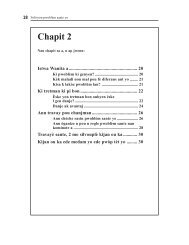
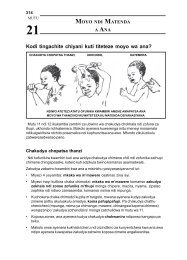
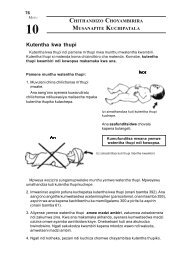
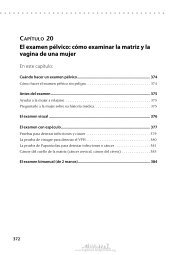
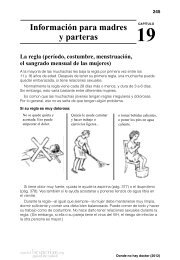
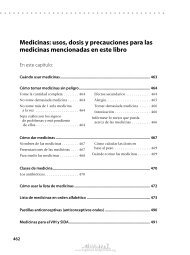
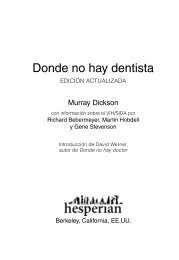
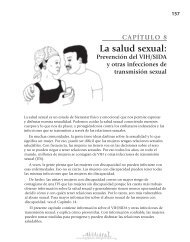
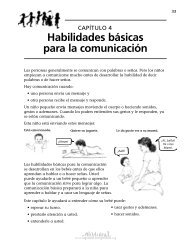


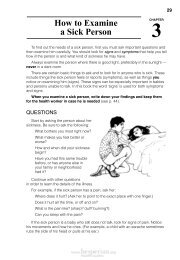
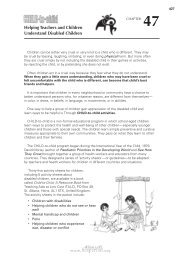
![kl/jf/ lgof]hg](https://img.yumpu.com/10041849/1/184x260/kl-jf-lgofhg.jpg?quality=85)